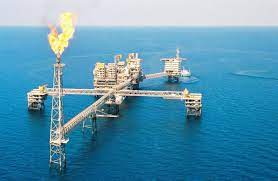Qatar continues to drive the Middle East’s international LNG trade flow, Asia in particular, according to the International Gas Union.
In its latest report, IGU noted that the LNG trade flow between the Middle East and Asia accounted for 43.29mn tonnes in 2023, driven by Qatar LNG supplies to China, India and Pakistan.
In 2023, global LNG trade flows remained concentrated within Asia Pacific, with Asia Pacific-to-Asia Pacific trade flows having the highest absolute value (95mn tonnes).
The third largest trade flow was from the Middle East to Asia at 43.29mn tonnes last year, as compared to 41.25mn tons in 2022, which was a 4.93% or 2.03mn tonnes increase.
Major contributors to this trade flow include Qatar to China (16.75mn tonnes), Qatar to India (10.92mn tonnes), and Qatar to Pakistan (6.32mn tonnes).
The biggest contributors to the net increase were Qatar to China (+0.70mn tonnes), UAE to China (+0.56mn tonnes), and Qatar to India (+0.37mn tonnes).
In 2023, inter-regional trade continued to be dominated by long-term imports, with 61.1% of net imports on the long-term, 3.8% on the short-term and 35.2% on spot.
Asia and Asia Pacific remained heavy on long-term imports, with 68.9% and 69.5% of net imports on the long-term, whereas net imports on spot were only 28.2% and 27.2%, respectively.
This is consistent with purchase patterns of major players in Asia and Asia Pacific that have historically preferred long-term contracts, with spot purchases being more opportunistic depending on prevalent prices and short-term demand.
Europe has mostly purchased on the spot market, corresponding to about 48.4% of net imports, with only 46.4% on long-term. This is consistent with European purchase patterns as spot cargoes were required to make up for an abrupt loss in Russian pipeline flow. Latin America purchases most of its cargoes in preparation for winter in the Southern Hemisphere, of which 65.5% of net imports are on the spot market, while long-term purchases are at 34.5%.
According to IGU, intra-Asia Pacific flows were made up primarily of flows coming from Australia, which contributed to 54.75mn tonnes.
The most dominant intra-Asia Pacific trade flow was Australia-to-Japan (27.61mn tonnes), then followed by Australia-to-South Korea (10.74mn tonnes) and Malaysia-to-Japan (10.43mn tonnes).
Intra-Asia Pacific trade flows declined by 2.1mn tonnes from 2022 to 2023. There were several notable increases from Australia to Thailand (+1.32mn tonnes), intra-Indonesia flows (+0.88mn tonnes), Malaysia to South Korea (+0.69mn tonnes).
However, contributing to a slight net decrease was Australia to Japan (-3.11mn tonnes), Malaysia to Japan (-1.58mn tonnes) and Australia to South Korea (-1.08mn tonnes).
The second largest trade flow between two regions was from North America to Europe at 56.63mn tonnes.
The biggest drivers of this trade flow were from the US to the UK (8.81mn tonnes), the US to Spain (5.32mn tonnes) and the US to Germany (4.14mn tonnes).
This trade flow remained almost constant year on year, mainly driven by the US to Netherlands (+4.95mn tonnes), the US to Germany (+4.14mn tonnes), and the US to Italy (+1.62mn tonnes).
There were also decreases along this trade route, particularly the US to Spain (-3.12mn tonnes), the US to France (-1.14mn tonnes), and the US to Turkey (-1.13mn tonnes).
 Iran Energy News Oil, Gas, Petrochemical and Energy Field Specialized Channel
Iran Energy News Oil, Gas, Petrochemical and Energy Field Specialized Channel




